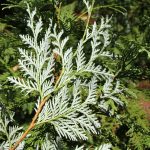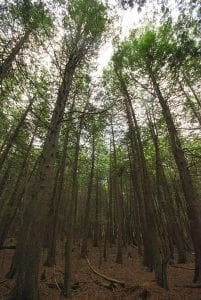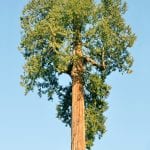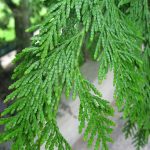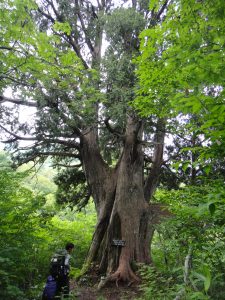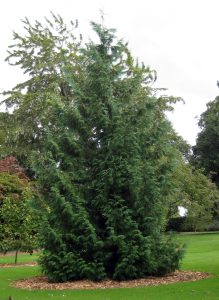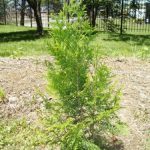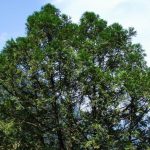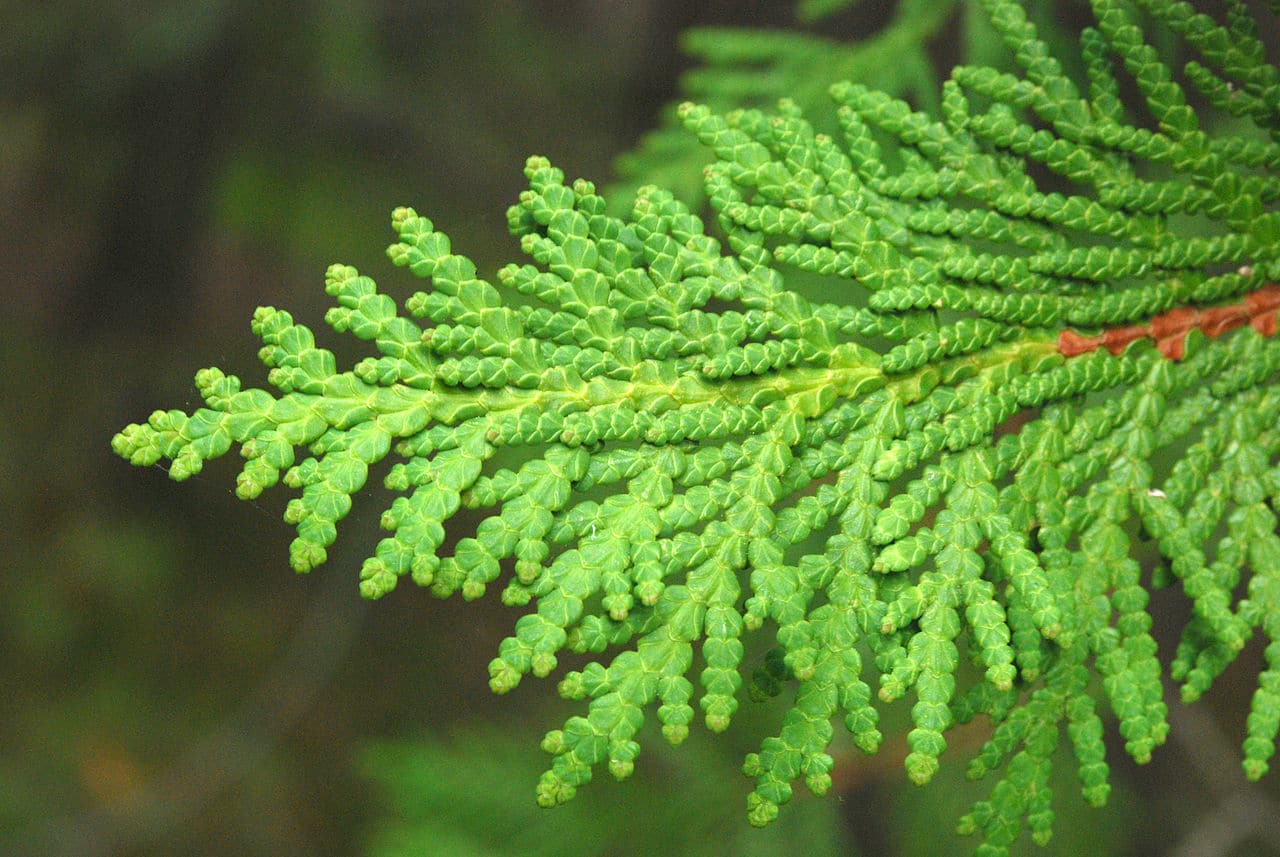
Image - Wikimedia / Joshua Mayer
The species of the genus Thuja they are very interesting to delimit areas of the garden. For example, with them we can have a path or path protected by a few specimens, which will beautify the place only with their presence. Also, you have to know that they provide good shade, something that you will surely want to benefit from if you live in a region where summers are very warm.
But although at first it is hard to believe, it is not necessary to have a very large plot to enjoy these conifers. Moreover, if they are pruned carefully, respecting the natural cycles of the trees, it is possible to grow them in all kinds of gardens, large or small, and even in pots.
Origin and characteristics of the Thuja
Plants of the genus Thuja are conifers related to cypresses, so they are included in the botanical family Cupressaceae. Genetically, it is very similar to Thujopsis, although it has harder and wider leaves, as well as thicker cones.
Our protagonists are a total of five species, three of which grow wild in East Asia, and two others grow in North America. They are evergreen, although this can create confusion, since their foliage is renewed from time to time, little by little.
They have a slow growth rate in general, but if all goes well they can live for more than two centuries. They reach a height of between 3 and 60 meters, with a trunk that is usually straight although they will tend to lean if the wind blows a lot or if they do not have much space.
Its leaves are scale-shaped, so it is said that they are squamiform, and are 1 to 10 millimeters long. The strobili, or cones, are either male or female. The former appear at the tips of the twigs; females are 1-2 centimeters long and mature at 6-8 months. These have 6-12 overlapping scales, are leathery, and have 1-2 small, winged seeds on each.
Types of yours
As we said, the genus is made up of five species, which are:
Thuja koraiensis
- Image - Wikimedia / Drew Avery
- Image - Wikimedia / Crusier
La Thuja koraiensis, known as tuya from Korea, is a species native to, as its surname indicates, Korea. It also grows in China, in its extreme northeast. It is in danger of extinction due to loss of habitat, especially in North Korea which is where the largest populations are found and where it is unprotected.
It grows as a shrub or tree from 3 to 10 meters high, with green foliage on the upper side and bright white on the underside.
Thuja occidentalis
- Image - Wikimedia / Joshua Mayer
La Thuja occidentalis, yours from Canada, is a conifer native to the northeastern United States and southeastern Canada. Reaches a height of 10 to 30 meters, with a trunk of about 40 centimeters.
Its foliage is green, made up of very small leaves 3 to 5 millimeters long, and green in color. It is used a lot as hedges.
thuja plicata
- Image - Wikimedia / abdallahh from Montréal, Canada
- Image - Wikimedia / Liné1
La thuja plicata, known as giant thuja or giant tree of life, is a species native to the western United States. It is the largest of the genus, being able to reach 60 meters in height. The leaves are dark green, shiny on the upper side and somewhat darker on the underside.
Thuja standishii
- Image - Wikimedia / Kikuko Nakayama
- Image - Wikimedia / Lokal_Profil
La Thuja standishii, known as tuya from Japan, is a species native to the south of that country. Reaches a height of 20 to 35 meters, with a trunk of up to 1 meter in diameter at most. Its foliage is very beautiful, with a matt green upper surface and white stomata on the underside.
thuja sutchuenensis
- Image - conifersociety.org
- Image - www.iucnredlist.org
La thuja sutchuenensis, known as thuya from Sichuan, is a conifer native to China, where it is in danger of extinction. Reaches an approximate height of 20 meters, and its leaves are green on the upper side and with white stomata on the underside.
What are the care that must be given to them?
Thuja are evergreen conifers that live in temperate regions, so they are plants that resist cold, frost, and also moderate heat. But let's see how they are to be maintained:
Location
They are plants that they must be abroad. You have to put them in a place where the sun hits them so that they have a correct development. It is also important that they are at least ten meters from where there are pipes or paved floors.
You should also bear in mind that, if you want them to grow straight, they should not have tall plants nearby. In fact, the ideal is that there is at least 3 meters between yours and another tree. Also, if the wind tends to blow strongly in your area, you will have to put a tutor (or two) so that the trunk does not lean.
Earth
- Flower pot: you can fill it with universal substrate. But first of all, put a layer about 3 centimeters thick of pumice, perlite or expanded clay for plants. This will improve drainage and the roots will have a lower risk of rotting.
- Garden: they grow in fertile lands, and that do not get flooded easily.
Irrigation
Generally, They will be watered about 3 times a week, except in winter when it will be 1 or 2. If it rains frequently in your area, you won't have to water as often, as it will take longer for the soil to dry out completely.
Subscriber

Throughout the growing season, that is, in spring and summer, you must pay them once a week, after 15 days or a month, depending on what type of fertilizer you use and how it is used. For example, if you opt for a liquid one, the normal thing is that it is used once every 7-15 days, since it is not only concentrated but also very quickly effective. On the other hand, if you choose manure, or by another slow release fertilizer, you will only have to apply it once a month.
Transplant
Plant the Thuja in the garden during spring, when there are no more frosts. If you grow them in pots, you have to plant them in larger ones if the roots come out through the holes.
Pruning
They don't need it. But if they are grown in pots for example, they should be pruned at the end of winter, keeping the shape of their glass.
Rusticity
The Thuja are rustic conifers, which withstand temperatures of up to -18ºC.
You have someone?

